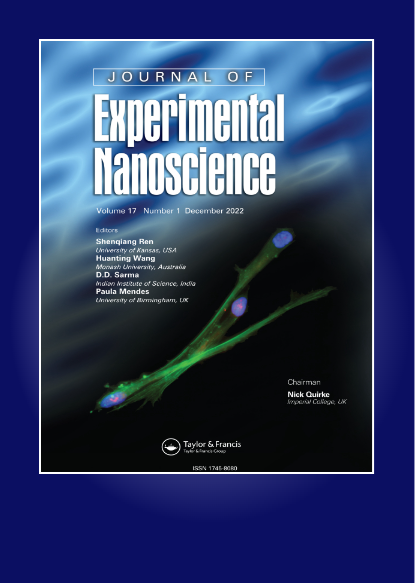Anti-human lung adenocarcinoma, cytotoxicity, and antioxidant potentials of copper nanoparticles green-synthesized by Calendula officinalis
IF 2.6
4区 材料科学
Q2 CHEMISTRY, MULTIDISCIPLINARY
引用次数: 13
Abstract
Abstract Calendula officinalis is known as a popular plant with various uses as pharmaceutical agent or food additive around the world. In this study, cooper nanoparticles were green synthesized using the aqueous extract of Calendula officinalis as the stabilizing, reducing, and capping agents. The formation of CuNPs@C. officinalis was screened using different chemical technique such as FT-IR spectroscopy, XRD, SEM, and Energy EDS. The antioxidant and anti-cancer activity of CuNPs@C. officinalis was studied using common assay including free radical scavenging and MTT assays. The results confirm the green synthesized of CuNPs@C. officinalis with aspherical morphology in the range size of 19.64 to 39.15 nm. In the antioxidant test, the IC50 of CuNPs@C. officinalis and BHT against DPPH free radicals were 193 and 154 µg/mL, respectively. In the cellular and molecular part of the recent study, the treated cells with CuNPs@C. officinalis were assessed by MTT assay for 24, 48, and 72 h about the cytotoxicity and anti-human lung adenocarcinoma properties on normal (HUVEC) and lung adenocarcinoma cell lines, i.e. lung moderately differentiated adenocarcinoma (LC-2/ad), lung poorly differentiated adenocarcinoma (PC-14), and lung well-differentiated bronchogenic adenocarcinoma (HLC-1). The IC50s of CuNPs@C. officinalis were 297, 328, and 514 µg/mL against PC-14, LC-2/ad, and HLC-1 cell lines, respectively. The viability of malignant lung cell line reduced dose-dependently in the presence of CuNPs@C. officinalis. It seems that the anti-human lung adenocarcinoma effect of recent nanoparticles is due to their antioxidant effects.金盏菊合成纳米铜绿的抗人肺腺癌、细胞毒性和抗氧化潜能
摘要金盏花是一种广受欢迎的植物,在世界各地具有多种药用或食品添加剂的用途。本研究以金盏花水提取物为稳定剂、还原剂和封端剂,绿色合成了铜纳米粒子。形成CuNPs@C.采用红外光谱、X射线衍射、扫描电镜、能量能谱等多种化学方法对山药材进行了筛选CuNPs@C.采用常用的自由基清除法和MTT法对厚朴进行了研究。结果证实了合成的绿色CuNPs@C.非球面形态的厚朴,尺寸在19.64至39.15之间 nm。在抗氧化剂测试中CuNPs@C.officinalis和BHT对DPPH自由基的抑制作用分别为193和154 µg/mL。在最近研究的细胞和分子部分CuNPs@C.通过MTT法评估24、48和72 h关于正常(HUVEC)和肺腺癌细胞系的细胞毒性和抗人肺腺癌特性,即肺中分化腺癌(LC-2/ad)、肺低分化腺腺癌(PC-14)和肺高分化支气管腺癌(HLC-1)。的IC50CuNPs@C.officinalis分别为297、328和514 µg/mL分别对抗PC-14、LC-2/ad和HLC-1细胞系。恶性肺细胞系的生存能力在存在CuNPs@C.厚朴。最近纳米颗粒的抗人肺腺癌作用似乎是由于它们的抗氧化作用。
本文章由计算机程序翻译,如有差异,请以英文原文为准。
求助全文
约1分钟内获得全文
求助全文
来源期刊

Journal of Experimental Nanoscience
工程技术-材料科学:综合
CiteScore
4.10
自引率
25.00%
发文量
39
审稿时长
6.5 months
期刊介绍:
Journal of Experimental Nanoscience, an international and multidisciplinary journal, provides a showcase for advances in the experimental sciences underlying nanotechnology and nanomaterials.
The journal exists to bring together the most significant papers making original contributions to nanoscience in a range of fields including biology and biochemistry, physics, chemistry, chemical, electrical and mechanical engineering, materials, pharmaceuticals and medicine. The aim is to provide a forum in which cross fertilization between application areas, methodologies, disciplines, as well as academic and industrial researchers can take place and new developments can be encouraged.
 求助内容:
求助内容: 应助结果提醒方式:
应助结果提醒方式:


